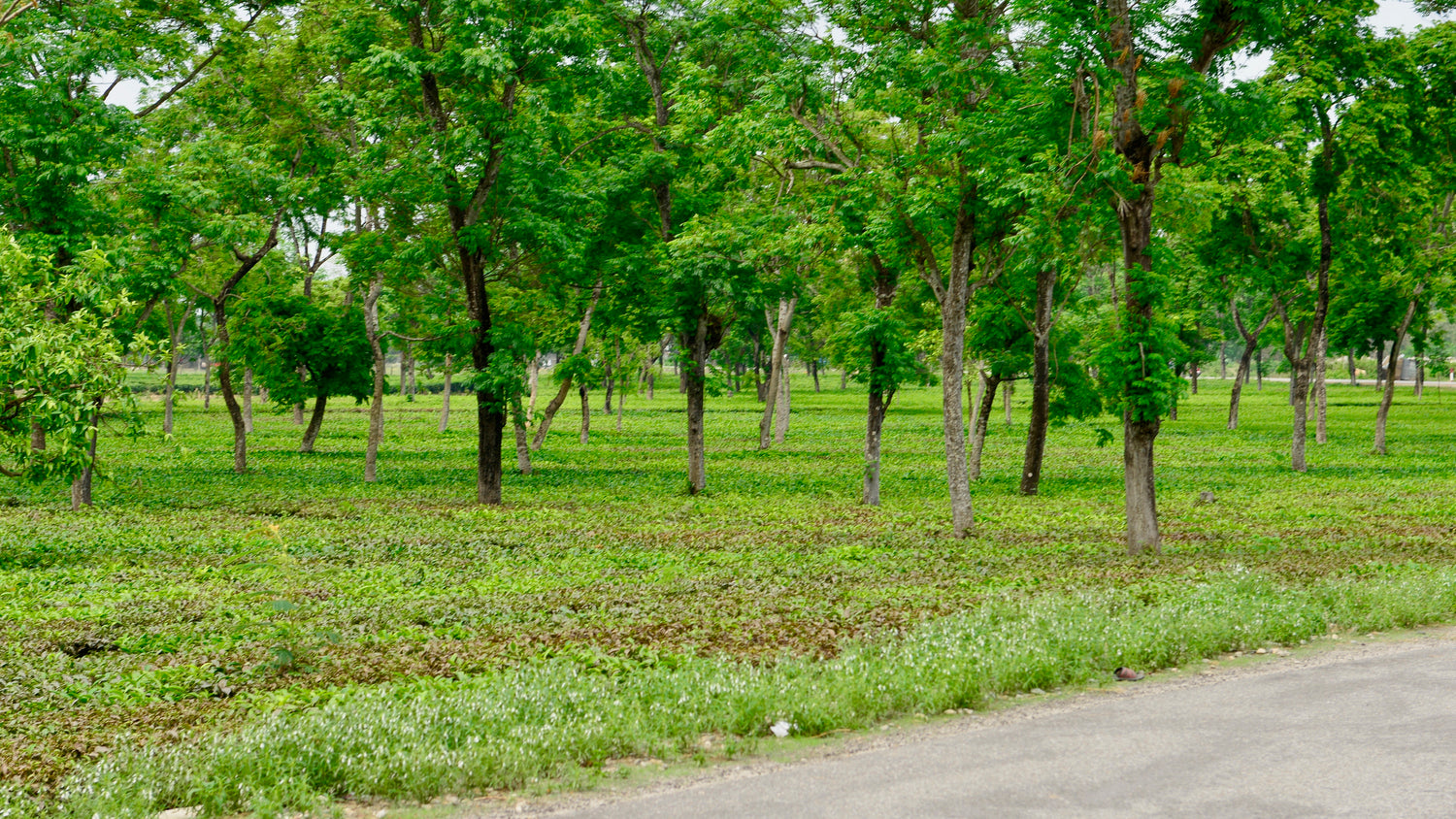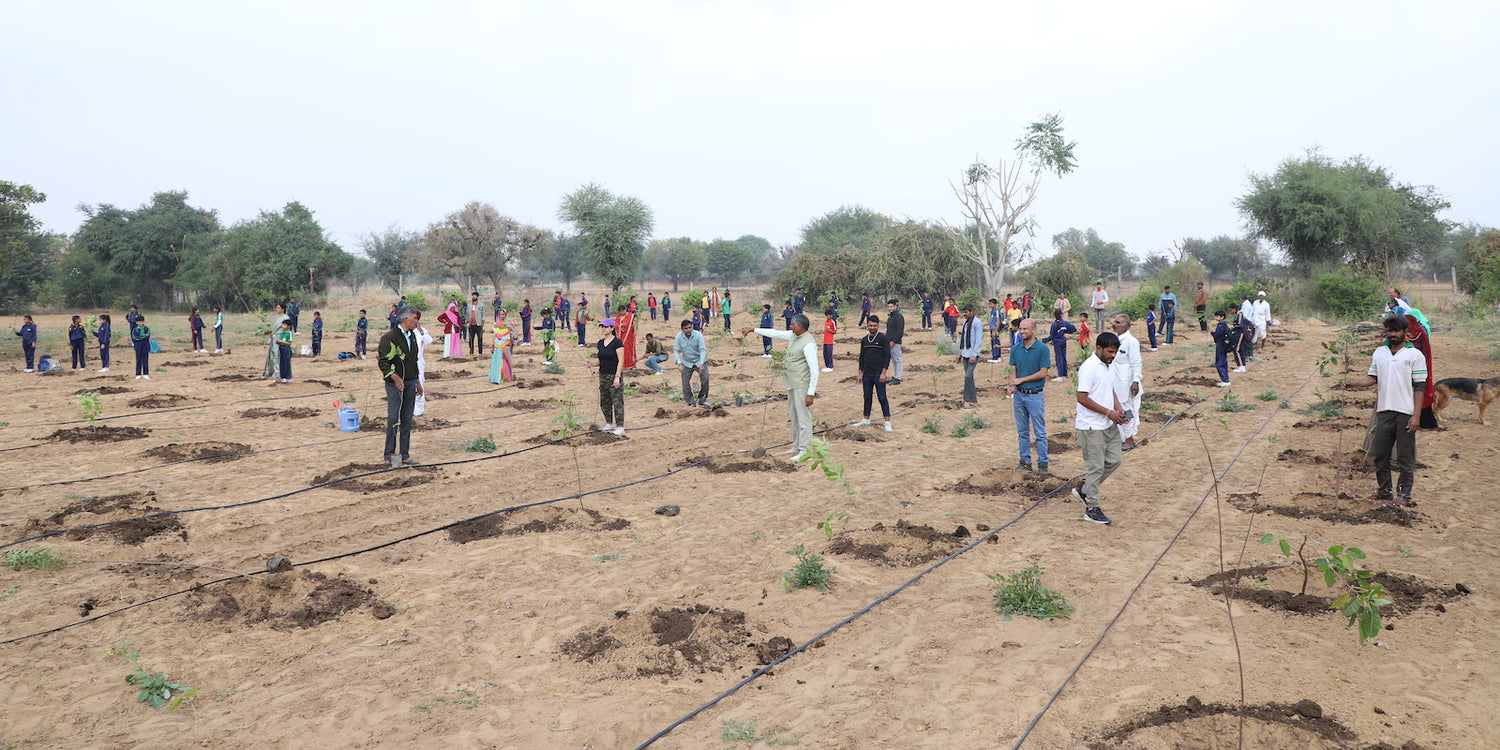Agroforestry in Haryana: Enhancing Productivity with Green Innovations
Haryana, the land of fertile plains and dynamic agriculture, plays a critical role in India's food security. Known for its robust contribution to the Read more
Connect with us
-
👥 Corporates
If you are looking for:
- 🌲 Tree Plantation Events
- 📊 CSR Projects
📧 corporate@growbilliontrees.com
📞 +91 9699723523
💬 +91 9325931304 WhatsApp (Only)
🕒 Mon - Sat | 10am - 7pm IST
-
🧩 Tree Plantation NGOs
If you are looking for:
- 💰 Financial Assistance
- 🤝 Operational Support
📧 support@growbilliontrees.com
📞 +91 9699723523
💬 +91 9325931304 WhatsApp (Only)
🕒 Mon - Sat | 10am - 7pm IST
-
🌼 Individuals
If you are looking for:
- 👥 Group Tree Plantation Drive
- 🌳 Bulk Tree Plantation
📞 +91 9699723523
💬 +91 9325931304 WhatsApp (Only)
🕒 Mon - Sat | 10am - 7pm IST
Trending
Trees for Corporates
Agroforestry in Haryana: Enhancing Productivity with Green Innovations
Haryana, the land of fertile plains and dynamic agriculture, plays a critical role in India's food security.
Known for its robust contribution to the Green Revolution, Haryana now faces environmental challenges like soil degradation, water scarcity, and climate change.
Agroforestry, a sustainable land-use system integrating trees, crops, and livestock, has emerged as a game-changer, offering ecological and economic benefits.
This article explores the historical roots, scientific advantages, environmental impacts, and future potential of agroforestry in Haryana. It also highlights the role of Grow Billion Trees in promoting sustainable farming practices in the state.
Historical Context of Agroforestry in Haryana
Haryana has a rich history of agroforestry. Traditional farming systems in the region incorporated trees like Neem (Azadirachta indica), Sheesham (Dalbergia sissoo), and Kikar (Acacia nilotica) alongside crops for fodder, timber, and shade.
Farmers also practiced boundary plantations to protect crops from wind and sandstorms, common in Haryana’s semi-arid regions.
The advent of the Green Revolution in the 1960s transformed Haryana into a grain powerhouse, but intensive monoculture farming led to reduced tree cover. Today, agroforestry is being revitalized to restore ecological balance and enhance farm productivity.
The Need for Agroforestry in Haryana
1. Restoring Soil Fertility
Intensive farming and overuse of chemical fertilizers have depleted Haryana’s soils. Agroforestry enriches soil with organic matter, enhancing its fertility and structure.
2. Combating Water Scarcity
Haryana faces severe groundwater depletion due to over-extraction for irrigation. Agroforestry systems improve water retention, reduce evaporation, and promote aquifer recharge.
3. Addressing Climate Change
Haryana’s farmers are vulnerable to climate variability, including erratic rainfall and extreme heat. Agroforestry creates microclimates, offering protection to crops and livestock.
4. Diversifying Farmer Incomes
Agroforestry provides additional revenue streams through timber, fruits, and non-timber forest products like gum and resin, reducing farmers’ dependence on single crops.
5. Increasing Green Cover
Agroforestry supports the Green India Mission by increasing tree cover, essential for Haryana’s semi-arid landscapes.
Scientific Benefits of Agroforestry
- Soil Health Improvement: Trees like Poplar and Eucalyptus add organic matter, improving soil fertility and microbial activity.
- Carbon Sequestration: Agroforestry systems in Haryana can sequester up to 25 tons of carbon dioxide per hectare annually, combating greenhouse gas emissions.
- Water Conservation: Tree roots reduce runoff and enhance groundwater recharge, ensuring sustainable water use in agriculture.
Common Agroforestry Practices in Haryana
1. Poplar-Based Agroforestry
Poplar trees are widely grown alongside crops like wheat and rice, offering high-value timber and shade for crops.
2. Boundary Plantations
Trees like Neem, Arjuna, and Kikar are planted along field boundaries, acting as windbreaks and providing fodder and fuelwood.
3. Horti-Silviculture
Fruit trees like Guava, Amla, and Ber are integrated with timber species, creating a sustainable blend of nutrition and income.
4. Silvo-Pastoral Systems
This system combines trees and grasses to provide fodder for livestock while improving soil stability in grazing lands.
Fun Facts About Agroforestry in Haryana
- Poplar Powerhouse: Haryana is one of India’s largest producers of poplar timber, widely used in the plywood industry.
- Neem Legacy: Known for its medicinal properties, Neem trees are a common sight in Haryana’s farms, offering ecological and economic benefits.
- Ber Bounty: The hardy Ber tree thrives in Haryana’s agroforestry systems, producing fruits rich in nutrition and market value.
Environmental Impact of Agroforestry in Haryana
1. Preventing Soil Erosion
Agroforestry reduces soil erosion by up to 50%, particularly in regions prone to wind erosion like Hisar and Bhiwani.
2. Enhancing Biodiversity
Agroforestry systems create habitats for birds, insects, and small mammals, fostering ecological balance in Haryana’s agricultural landscapes.
3. Improving Air Quality
Trees filter dust and pollutants, improving air quality in areas affected by stubble burning and industrial emissions.
4. Mitigating Urban Heat Islands
Agroforestry in peri-urban areas like Gurgaon and Faridabad reduces temperatures, enhancing the urban microclimate.
Challenges in Agroforestry Adoption
-
Lack of Awareness Farmers often lack knowledge about agroforestry’s long-term benefits, leading to slower adoption.
-
Policy Barriers Complex regulations around tree felling and timber trade discourage farmers from planting high-value trees.
-
Market Access Farmers face difficulties accessing markets for timber and non-timber products, affecting profitability.
-
Climate Risks Extreme weather events like heatwaves and droughts pose challenges to maintaining agroforestry systems.
Grow Billion Trees: Transforming Agroforestry in Haryana
Grow Billion Trees is revolutionizing agroforestry in Haryana by promoting sustainable practices, empowering farmers, and restoring ecosystems.
Collaborations
- Partnering with the Haryana Forest Department and local NGOs to implement agroforestry projects.
- Collaborating with agricultural universities to develop region-specific agroforestry models.
Execution Strategies
- Tree Nurseries: Establishing nurseries to supply saplings of species like Poplar, Neem, and Ber at affordable rates.
- Farmer Training Programs: Conducting workshops and field demonstrations to educate farmers about agroforestry techniques and their benefits.
- Market Linkages: Connecting farmers to markets for timber and non-timber products, ensuring fair pricing and steady demand.
Awareness and Advocacy
- Running campaigns to promote agroforestry’s role in climate resilience and sustainable agriculture.
- Sharing success stories of farmers who have benefited from agroforestry to inspire wider adoption.
Key Achievements by Grow Billion Trees
- Tree Plantation Drives: Over 5 million trees planted across Haryana, increasing green cover and restoring degraded lands.
- Farmer Empowerment: Enabled over 8,000 farmers to adopt agroforestry, improving their incomes by up to 35%.
- Carbon Sequestration: Agroforestry projects under Grow Billion Trees in Haryana have sequestered over 500,000 tons of carbon dioxide.
Future Prospects
By 2030, agroforestry in Haryana has the potential to:
- Increase the state’s green cover by 10%, contributing to India’s environmental goals.
- Restore over 300,000 hectares of degraded land, enhancing agricultural productivity.
- Provide additional income to over 20,000 farming households, ensuring economic stability and resilience against climate challenges.
Conclusion
Agroforestry in Haryana offers a sustainable solution to the state’s agricultural and environmental challenges.
By integrating trees with crops and livestock, this practice enhances biodiversity, combats climate change, and diversifies farmer incomes.
Grow Billion Trees is leading the charge, empowering farmers, restoring ecosystems, and building a greener future for Haryana.
Through collective efforts, agroforestry will become a cornerstone of Haryana’s journey toward sustainability and prosperity, ensuring a balanced relationship between agriculture and forestry.
Poplar Agroforestry in Haryana
Poplar trees are the farmers’ fast-growing friends, offering high-value timber while coexisting harmoniously with wheat and rice in Haryana’s fields.
Neem in Haryana Agroforestry
The versatile Neem tree, a natural pest repellent and soil enhancer, thrives in Haryana’s agroforestry systems, providing medicinal benefits and sustainable farming solutions.
Boundary Plantations in Haryana
Trees like Kikar and Sheesham line field edges, doubling as windbreaks, natural fences, and extra income sources for Haryana’s innovative farmers.
Horti-Silviculture in Haryana
Fruit trees like Ber and Guava team up with timber species, creating a profitable mix of nutrition and sustainability across Haryana’s farms.
Silvo-Pastoral Systems in Haryana
Blending trees and grasses, these systems ensure fodder for livestock while stabilizing soil, making them perfect for Haryana’s semi-arid regions.
Carbon Sequestration in Haryana Agroforestry
Agroforestry systems in Haryana capture carbon dioxide like pros, turning fields into climate warriors one tree at a time.
Agroforestry for Soil Fertility in Haryana
Tree roots enhance soil structure and organic content, restoring Haryana’s overworked lands to their fertile glory.
Bamboo Agroforestry in Haryana
Fast-growing bamboo offers construction material, crafts, and profits, making it a valuable addition to Haryana’s agroforestry models.
Grow Billion Trees in Haryana Agroforestry
Empowering farmers with saplings and training, Grow Billion Trees transforms Haryana’s farmlands into sustainable green ecosystems.
Agroforestry for Biodiversity in Haryana
These systems attract birds, pollinators, and other wildlife, turning Haryana’s farms into buzzing biodiversity hubs.
Agroforestry and Water Conservation in Haryana
Tree roots reduce water runoff and recharge aquifers, helping Haryana combat its growing groundwater crisis.
Sheesham in Haryana Agroforestry
Sheesham trees provide durable timber, stabilize soil, and bring a classic touch to Haryana’s modern agroforestry systems.
You may like
Corporate Plantations
FAQ
What is agroforestry in Haryana?
Agroforestry integrates trees, crops, and livestock to boost farm productivity and sustainability. Grow Billion Trees promotes this green innovation to transform Haryana’s agricultural landscapes.
Why is agroforestry important in Haryana?
It restores soil fertility, combats water scarcity, and diversifies farmer incomes. Grow Billion Trees ensures agroforestry benefits farmers while addressing environmental challenges in Haryana.
How does agroforestry combat soil degradation in Haryana?
Trees improve soil structure, add organic matter, and reduce erosion. Grow Billion Trees partners with farmers to restore degraded lands through agroforestry systems.
Which trees are popular in Haryana’s agroforestry systems?
Poplar, Neem, and Sheesham are farmer favorites, offering timber, shade, and pest control. Grow Billion Trees provides saplings and support for these valuable species.
How does agroforestry help with Haryana’s water crisis?
Tree roots reduce runoff and enhance groundwater recharge, promoting sustainable water use. Grow Billion Trees encourages agroforestry to tackle Haryana’s water challenges.
What is the role of Poplar in Haryana’s agroforestry?
Poplar trees grow quickly and pair well with crops, providing high-value timber. Grow Billion Trees supports Poplar-based agroforestry for its economic and ecological benefits.
Can agroforestry improve biodiversity in Haryana?
Yes, agroforestry systems create habitats for birds, pollinators, and wildlife. Grow Billion Trees promotes designs that balance farming with biodiversity conservation.
How does agroforestry contribute to Haryana’s climate goals?
Agroforestry sequesters carbon and reduces greenhouse gases, making it a powerful tool against climate change. Grow Billion Trees scales up these systems for maximum impact.
What is silvo-pastoral agroforestry in Haryana?
This system combines trees and grasses, providing shade and fodder for livestock. Grow Billion Trees encourages silvo-pastoral systems to support Haryana’s dairy industry.
What challenges do farmers face with agroforestry in Haryana?
Policy barriers and market access are common hurdles. Grow Billion Trees bridges these gaps by offering training, resources, and market linkages.
How does Grow Billion Trees promote agroforestry in Haryana?
We plant trees, train farmers, and build market connections, ensuring agroforestry thrives as a sustainable model in Haryana.
Can small farmers adopt agroforestry in Haryana?
Absolutely! Small farmers benefit from increased incomes and sustainable farming. Grow Billion Trees provides saplings, training, and support to make agroforestry accessible to all.























